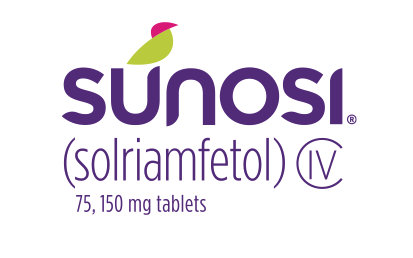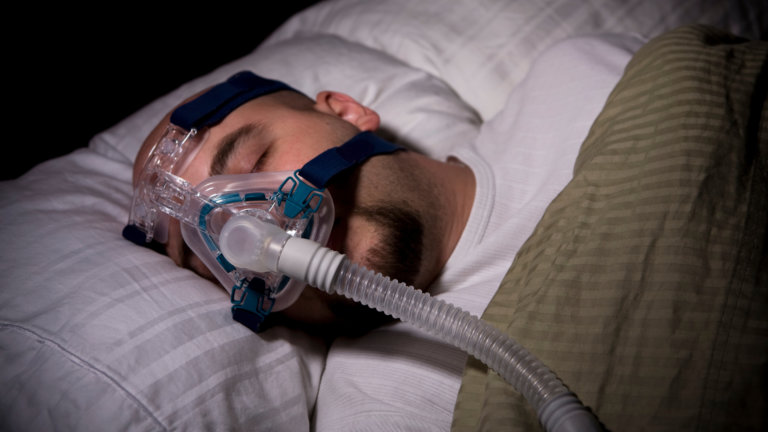Sunosi vs. Modafinil: Which Medication Is Better for Treating Narcolepsy and Sleep Apnea?
Sunosi (solriamfetol) and Modafinil are both FDA-approved medications used to treat excessive daytime sleepiness (EDS) associated with narcolepsy and obstructive sleep apnea (OSA). Although they share the same goal of improving wakefulness, their mechanisms of action, clinical effectiveness, side effect profiles, and cost structures differ in ways that can influence treatment decisions.
What Is Sunosi (Solriamfetol)?
Sunosi is a dopamine and norepinephrine reuptake inhibitor developed by Jazz Pharmaceuticals. It is approved in the U.S. for:
- Narcolepsy-related EDS
- OSA-related EDS
(Markham, 2019)
Mechanism of Action
Solriamfetol increases extracellular concentrations of dopamine and norepinephrine by inhibiting their reuptake, without significant activity at serotonin receptors (Markham, 2019).
What Is Modafinil?
Modafinil is the active ingredient in Provigil, originally developed to treat narcolepsy. It is FDA-approved for:
- Narcolepsy-related EDS
- OSA-related EDS
- Shift work disorder (SWD)
(U.S. Food and Drug Administration, 2015)
Mechanism of Action
While not fully understood, Modafinil is believed to inhibit dopamine reuptake by binding to the dopamine transporter (DAT), increasing dopamine levels in the brain (Greenblatt & Adams, 2025).
Effectiveness for Narcolepsy and OSA
Sunosi (Solriamfetol)
Clinical trials such as TONES 2 and TONES 3 have shown that solriamfetol significantly improves:
- Maintenance of Wakefulness Test (MWT) scores
- Epworth Sleepiness Scale (ESS) scores
- Patients receiving 75–150 mg/day demonstrated greater wakefulness and reduced EDS compared to placebo
(Krystal et al., 2022)
Modafinil
Modafinil has shown effectiveness in:
- Increasing MWT scores
- Reducing ESS scores
(Greenblatt & Adams, 2025)
A study in OSA patients reported statistically significant improvements in both subjective and objective sleepiness measures compared to placebo (U.S. Food and Drug Administration, 2015).
Head-to-Head Comparison
There are no direct head-to-head trials comparing Modafinil and Sunosi. However, both drugs have demonstrated strong efficacy in similar patient populations. Choice often depends on side effect profile, individual tolerability, and insurance coverage.
Dosage and Administration
Sunosi
- Starting dose: 75 mg once daily (narcolepsy); 37.5 mg for OSA
- Maximum dose: 150 mg once daily
- Should be taken in the morning, with or without food
- Renal function should be monitored; adjust dose in moderate/severe impairment
(Markham, 2019)
Modafinil
- Typical dose: 100–200 mg once daily in the morning
- For SWD, take 1 hour before shift
- No renal dosing required but monitor in hepatic impairment
(U.S. Food and Drug Administration, 2015)
Side Effects and Safety
Common Side Effects
| Medication | Common Side Effects |
|---|---|
| Sunosi | Headache, nausea, decreased appetite, anxiety, increased blood pressure (Markham, 2019) |
| Modafinil | Headache, nausea, nervousness, dizziness, insomnia (Greenblatt & Adams, 2025) |
Serious Risks
- Sunosi: Elevated blood pressure, cardiovascular events. Not advised for patients with uncontrolled hypertension (Krystal et al., 2022).
- Modafinil: Risk of serious rash (e.g., Stevens-Johnson syndrome), psychiatric symptoms, and cardiovascular events in rare cases (Greenblatt & Adams, 2025).
Drug Interactions
Sunosi
- Avoid with MAOIs: Risk of hypertensive crisis
- Use caution when combined with other stimulants or serotonergic agents
(Markham, 2019)
Modafinil
- Reduces effectiveness of hormonal contraceptives
- May alter plasma levels of:
- Warfarin
- Anticonvulsants (e.g., phenytoin)
- Benzodiazepines
(U.S. Food and Drug Administration, 2015)
Cost and Availability
| Feature | Sunosi | Modafinil |
|---|---|---|
| Generic? | No | Yes |
| Brand name | Sunosi | Provigil |
| Cost | Higher (no generic) | Lower (generic available) |
| Assistance | Manufacturer coupons, savings programs | Generic coupons, pharmacy discounts |
Weaver et al. (2021) also noted long-term improvements in productivity and quality of life with Sunosi in some patients with OSA and narcolepsy, though cost remains a consideration.
Which Should You Choose?
The decision between Sunosi and Modafinil should be based on:
- Insurance coverage
- Tolerability
- Comorbid health conditions
- Sleep disorder diagnosis (e.g., shift work disorder = Modafinil)
- Cost accessibility
🩺 Talk with a sleep medicine specialist or neurologist before switching medications or starting treatment.
References
- U.S. Food and Drug Administration. (2015). PROVIGIL® (modafinil) tablets, for oral use, C-IV [prescribing information]. U.S. Department of Health and Human Services. Retrieved from https://www.accessdata.fda.gov/drugsatfda_docs/label/2015/020717s037s038lbl.pdf
- Greenblatt, K., & Adams, N. (2025). Modafinil. In StatPearls [Internet]. StatPearls Publishing. https://www.ncbi.nlm.nih.gov/books/NBK531476/
- Markham, A. (2019). Solriamfetol: First global approval. Drugs, 79(7), 785–790. https://doi.org/10.1007/s40265-019-01123-y
- Krystal, A. D., Benca, R. M., Rosenberg, R., Schweitzer, P. K., Malhotra, A., Babson, K., Lee, L., Bujanover, S., & Strohl, K. P. (2022). Solriamfetol treatment of excessive daytime sleepiness in participants with narcolepsy or obstructive sleep apnea with a history of depression. Journal of Psychiatric Research, 155, 202–210. https://doi.org/10.1016/j.jpsychires.2022.08.018
- Weaver, T. E., Pepin, J. L., Schwab, R., Shapiro, C., Hedner, J., Ahmed, M., Foldvary-Schaefer, N., Strollo, P. J., Mayer, G., Sarmiento, K., Baladi, M., Bron, M., Chandler, P., Lee, L., & Malhotra, A. (2021). Long-term effects of solriamfetol on quality of life and work productivity in participants with excessive daytime sleepiness associated with narcolepsy or obstructive sleep apnea. Journal of Clinical Sleep Medicine, 17(10), 1995–2007. https://doi.org/10.5664/jcsm.9384








